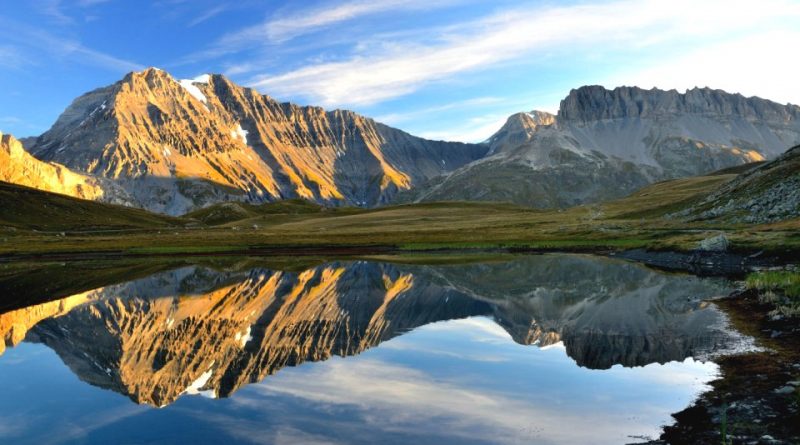National Park of Abruzzo, Lazio and Molise
National Park of Abruzzo, Lazio and Molise
The National Park of Abruzzo, Lazio and Molise is a national park included for about 3/4 in the province of L’Aquila in Abruzzo and for the remainder in that of Frosinone in Lazio and in that of Isernia in Molise. This park was inaugurated on 9 September 1922 in Pescasseroli, the current headquarters and central management of the park. The body of the same name had already been constituted on 25 November 1921 with a temporary directory and its institution took place with the Royal Decree-Law of 11 January 1923.
It is certainly the most famous park in Italy, and also known all over the world as a model for the conservation of nature and the defense of the environment. In the last 20 years the park has been able to develop harmoniously thanks to the “zoning” of the territory, which has allowed the integration of conservation and development in agreement with the municipalities of the park to overcome the urban problems.
The territory of the National Park of Abruzzo, Lazio and Molise consists mainly of a set of mountain ranges of altitudes between 900 and 2,200 m s.l.m.
The fauna of the Park offers examples of exceptional value, with species that alone could justify the existence of the protected area. Inside the park there are a large variety of animals that obviously once occupied a much wider area within the Apennines. The following were recorded: 67 species of mammals, 230 of birds, 14 of reptiles, 12 of amphibians, 15 of fish, and 4,764 species of insects, including important endemics.
Among them it is possible to observe also the most spectacular and representative animals of the Park, such as the Apennine chamois, the Marsican brown bear, the wolf, the deer and the golden eagle.
The flora of the Park is so rich and interesting that it has always been the object of study. In total it is possible to list about 2,000 species of higher plants, in addition to mosses, lichens, algae and fungi. Among the floristic peculiarities, the iris (Iris marsica) stands out as an endemism of the park, which grows only in some places and which blooms between May and June.
There are also numerous colorful orchids such as the large and rare Venus slipper or Madonna’s slipper (Cypripedium calceolus), which blooms in the most hidden corners, between May and June, and which risks extinction due to unnecessary collection and therefore vandalism . Another rarity is the black pine of Villetta Barrea (Pinus nigra), a relict species probably dating back to the Tertiary; it is an exclusive variety of the Park, located in some areas of Camosciara and Val Fondillo. Among the spontaneous conifers, we find the mugo pine (Pinus mugo), a glacial relict that occupies the vegetation belt between the beech forest and the prairie of altitude, also located mainly in the Camosciara area.
In the park we also find a small birch station (Betula pendula), located in Barrea in a place called Coppo Oscuro. It is a relict species, typical of the Quaternary glacial epochs, which testifies to the cold vegetation once predominant in the Apennines.
But the predominant plant landscape of the Park consists of beech forests: the scientific name of this species, Fagus syIvatica, recalls the spontaneous origin of this species in the mountains of the Apennine Italy, where the presence of beeches dates back to tens of centuries ago and today they occupy more than 60% of the entire area of the Park. In addition, abundant tufts of “beard of the forest” (Usnea florida), a typical lichen of this Apennine environment, hang from the branches of the beech trees. Unfortunately, before the reorganization of the National Park of Abruzzo, Lazio and Molise, between 1957 and 1967, more than 650,000 tall trees were cut.
Since 1969, with the reorganization of the Entity, all the cuts for industrial use have been banned, thus stopping a real foresting speculation.
Beyond the limit of the forests we find also the dwarf juniper (Juniperus communis nana), of prostrate form, and wrecks of the northern moor like the blueberry (Vaccinium myrtillus) and the bearberry (ArctostaphyIos uva-ursl), which reveal the presence, in past times, of a top layer of coniferous vegetation. Also on the prairies that occupy ridges and summits around 1.900-2.000 meters of altitude we find a vegetation of Gramineae and Ciperaceae, which are accompanied in the summer by the yellow gentian major and many other species: gentian, gentianella, primrose, cyclamen, violets, anemones , scilie, lilies, orchids, saxifrages, buttercups, asperulas, dentarie, ofridi, ellebori, hepatic. The red lilies (Lilium bulbiferum croceum) are very prominent, typical of the sunny and dry slopes, the martagon lily (Lilium martagon), which we find in the less dense beech woods, the aquilegia (Aquilegia ottonis), abundant in the pastures and uncultivated land, the gentian Appennine (Gentiana dinarica), of an intense blue, and the aforementioned Iris marsica.
This great natural biodiversity, together with the morphological and geological one, creates one of the greatest ecosystems in the world where only a new policy of coexistence between Man and Nature can guarantee a new Ecological era.
Guido Bissanti

